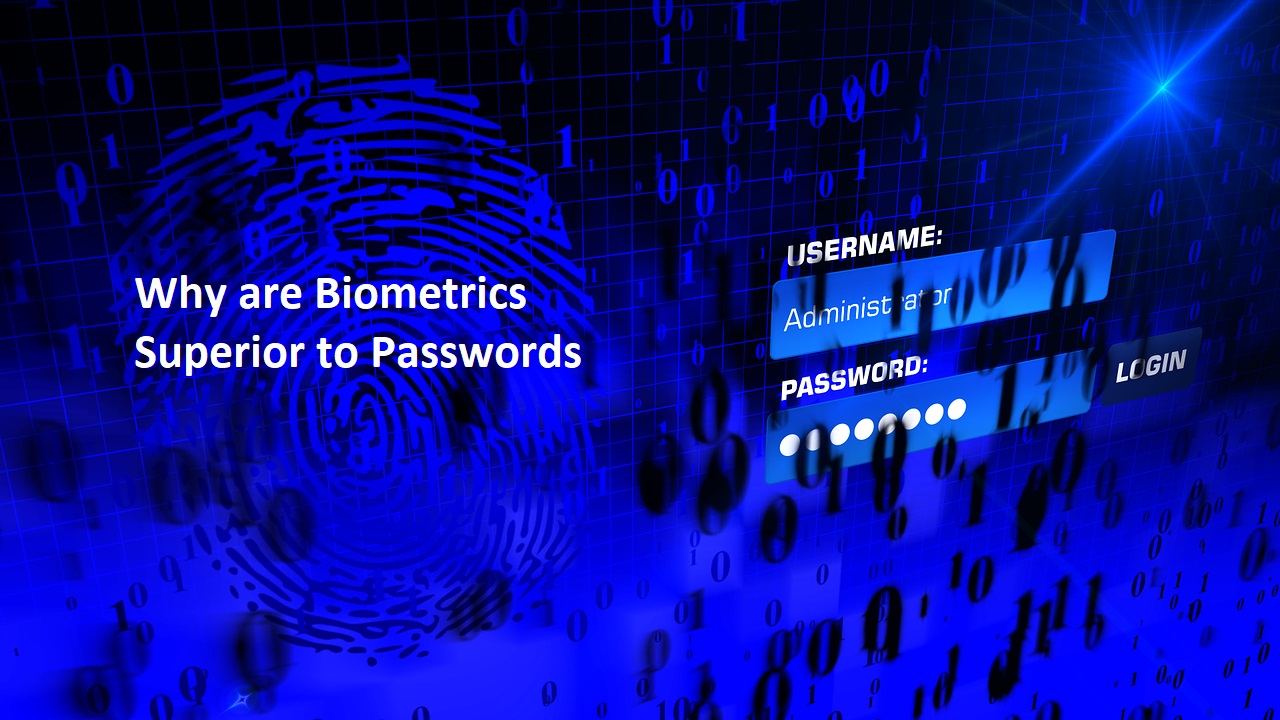The use of biometrics for authentication has gradually increased over the last decade. This growing trend does not appear to be slowing down anytime soon, according to a new Transparency Market Research study.
Many causes contribute to this increase, but one of them is probably the common idea that biometrics are superior to passwords. For years, cybersecurity professionals have advocated for the abolition of passwords, yet they remain a regular feature of most people’s daily lives throughout the globe.
But how is this possible? Here are a few reasons why biometrics are superior to passwords:
-
Biometrics cannot be lost or stolen.
Passwords are easily forgotten. In fact, an ancient internet cliché states that “the only safe password is the one you can’t remember.” Because of complex and lengthy password-changing processes, users often forget their passwords (or, in the most secure circumstances, do not write them down someplace safe).
Passwords may also be stolen by convincing end users to click on dangerous links or open malware-infected files.
Biometrics solves both of these problems at the same time, since it is difficult for users to forget how to present their faces or fingerprints to a biometric system.
Of course, someone may be duped into utilizing biometrics to authenticate themselves on a rogue site. However, this is uncommon since biometric technology and systems often have many security levels.
You might also like to read: Why are US hospitals choosing iris biometrics for patient identification?
-
Biometrics are more secure by definition.
For example, biometrics are often regarded as more secure than passwords. Biometric data, for example, may be processed by a non-reversible algorithm and stored centrally in a safe format.
Biometric systems could also use multimodal authentication, which combines face, iris, and finger biometrics, to make security much stronger.
-
Biometric authentication is more efficient and user-friendly.
Traditional password-based authentication suffers from mistakes, but biometrics do not.
While biometric systems may take more than one tries to achieve effective authentication, studies show that they may save time in a variety of contexts, including air travel.
In general, current research indicates that IT workers’ dissatisfaction with traditional security mechanisms such as passwords is driving them toward password less authentication and biometric identity verification solutions.
-
The dark web does not sell biometrics (so much).
Passwords and other types of knowledge-based authentication (KBA) have been widely available on the dark web for some time.
According to Digital Shadows research, more than 15 billion stolen account credentials are presently for sale on cybercrime forums, with 5 billion of them deemed unique.
Biometric data, on the other hand, remains scarce on the dark web. Despite the fact that selfies with IDs that could be used in biometric spoof attacks have been discovered on dark web forums, online service providers can combat the issue by employing presentation attack detection (PAD) and liveness checks.
You might also like to read: Putting in place a digital identity framework successfully
-
Biometric information cannot be shared.
Last but not least, sharing passwords is a big security risk. A recent survey by SurveyMonkey found that one-third of people in the U.S. share passwords or accounts with coworkers.
Password sharing introduces a number of security issues, including attributability, particularly when employees modify critical corporate data or make unauthorized charges.
Biometrics, understandably, cannot be shared between people (except in the case of face recognition of twins or doppelgangers), making the technique inherently more secure than passwords.
Contact M2SYS now for more information on how you can use biometrics to replace passwords in the workplace.

Darren Trumbler is a versatile content writer specializing in B2B technology, marketing strategies, and wellness. With a knack for breaking down complex topics into engaging, easy-to-understand narratives, Darren helps businesses communicate effectively with their audiences.
Over the years, Darren has crafted high-impact content for diverse industries, from tech startups to established enterprises, focusing on thought leadership articles, blog posts, and marketing collateral that drive results. Beyond his professional expertise, he is passionate about wellness and enjoys writing about strategies for achieving balance in work and life.
When he’s not creating compelling content, Darren can be found exploring the latest tech innovations, reading up on marketing trends, or advocating for a healthier lifestyle.
